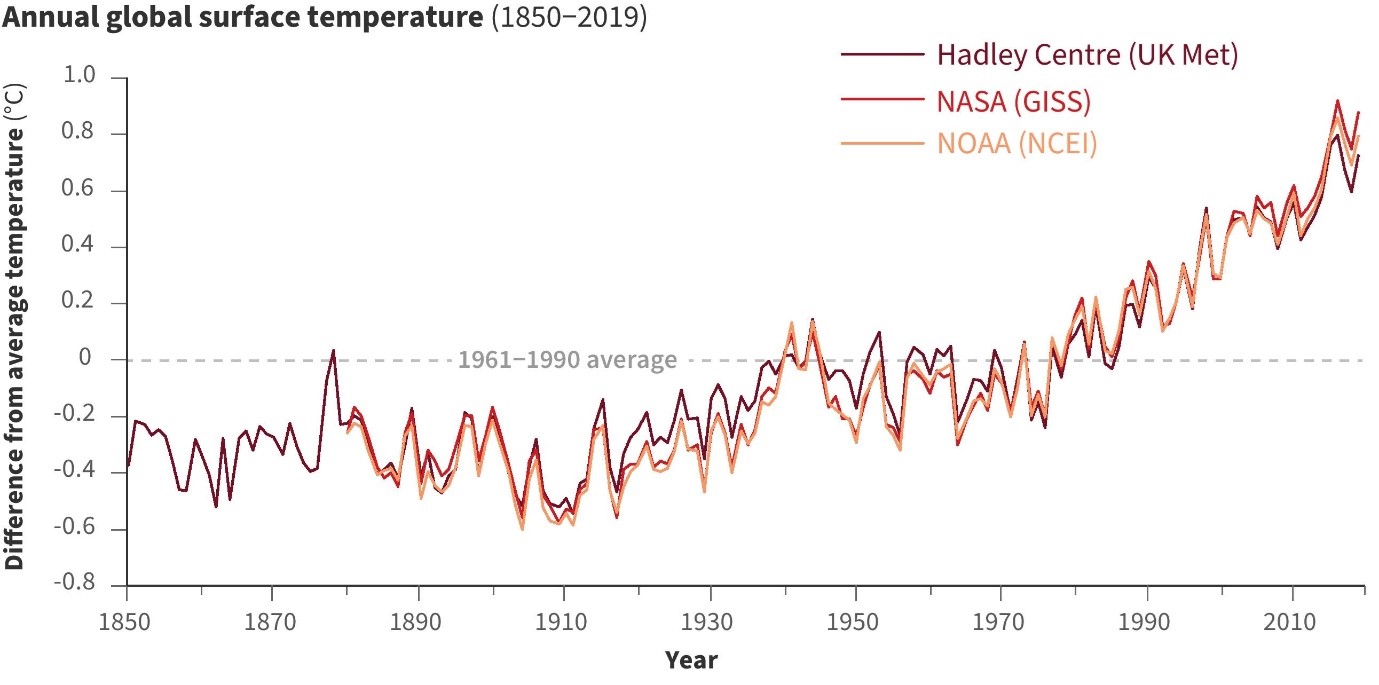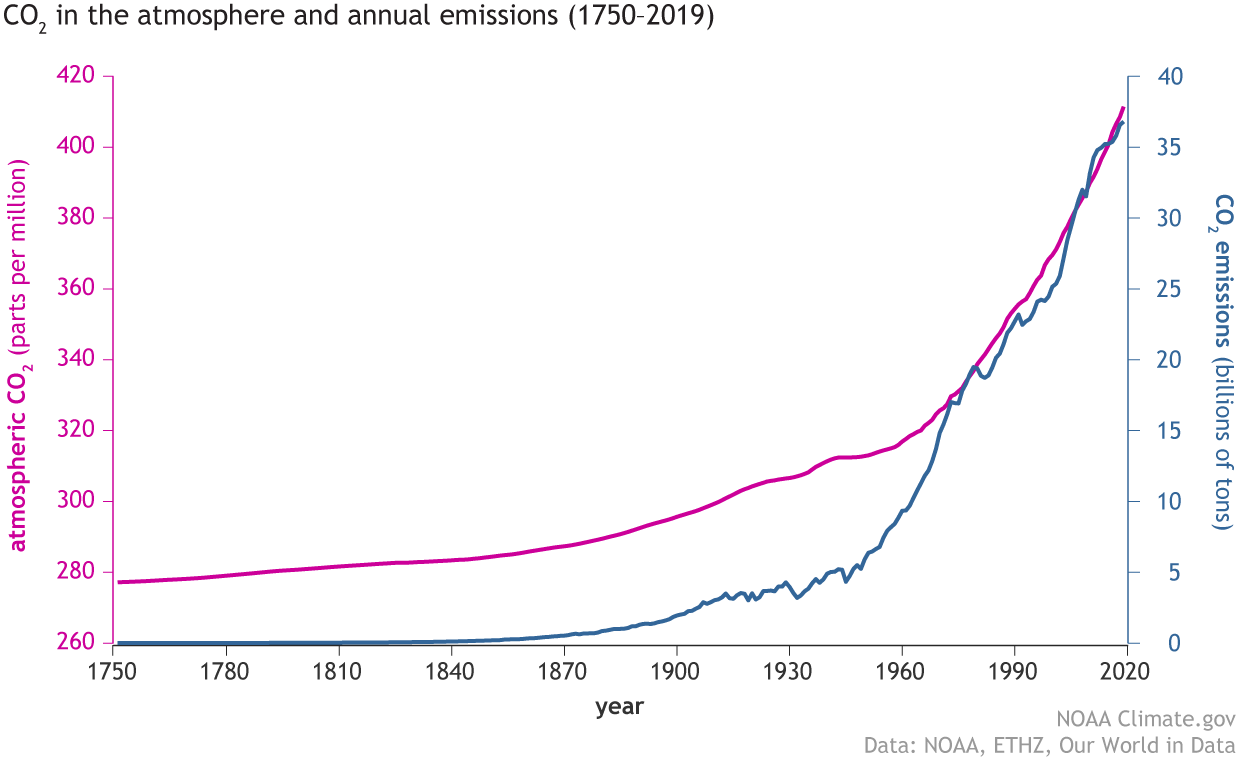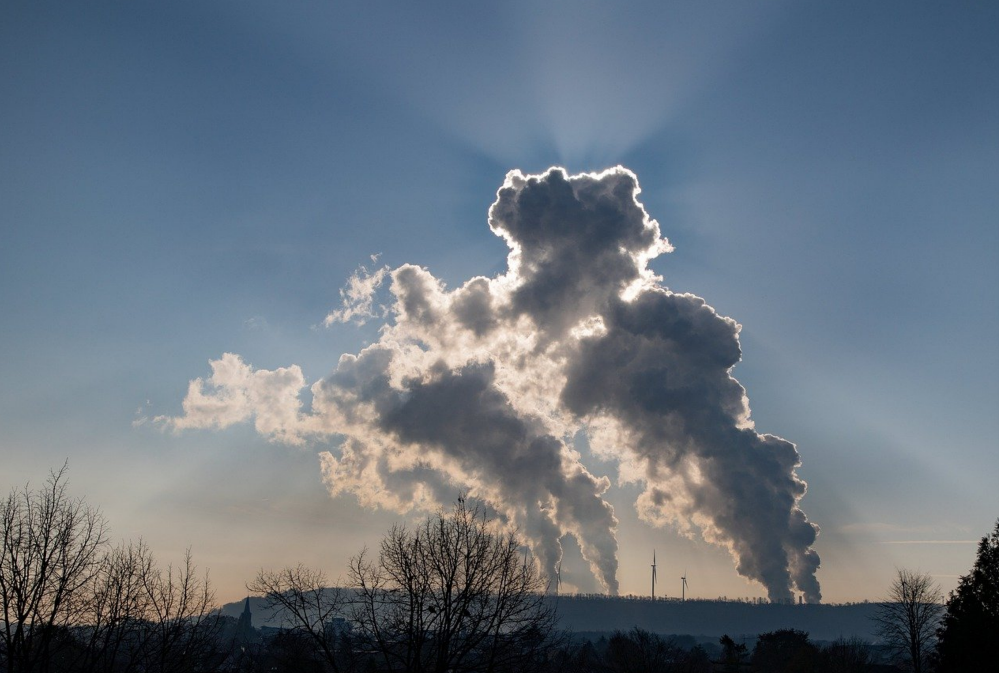Everywhere you look these days there are references to Net Zero, Low Carbon, Carbon Tax, but why are we so obsessed and why now?
Carbon refers to Carbon Dioxide (CO2) in this respect, and it is important as CO2 accounts for approximately 80% of all greenhouse gases (GHGs) that are released into the atmosphere by human activity. The other 20% of greenhouses gases emitted that have negative long-term effects on the planet are Methane (CH4), Nitrous Oxide (N2O) and Fluorinated Gases (refrigerants, and by products of aluminium and semi-conductor manufacturing).
Why are we bothered about greenhouses gases? Simple, they cause warming of the planet, which affects the delicately balanced system that supports the human population. The GHGs are named due to the macroscale effect that can be analogised to that of an agricultural greenhouse, trapping heat. The Earth gets warm due to radiation from the sun warming the atmosphere, some is absorbed by the earth, and the rest gets reflected out into space. However, with more GHGs in the atmosphere, more thermal energy is trapped, causing cumulative heating. The chart below, published by The Royal Society, shows the increase in global temperatures since 1850 from three independent sources.

GHGs, once emitted into the atmosphere, remain there for long time periods ranging from a decade to thousands of years. These gases can be naturally removed from the atmosphere by chemical reactions or by emissions sinks (such as the oceans and vegetation), which absorb greenhouse gases on a long timeline. However, as a result of anthropogenic factors the gases are entering the atmosphere more quickly and overwhelming the natural removal processes; therefore, concentrations are increasing.
As shown in the graph to the right shows, CO2 levels have increased significantly (>145%) over the last 300 years, since the industrial revolution when humans began burning significantly more solid fuels (coal, wood) and fossil fuels (since late 19th century).

CO2 emissions vs concentrations
Even if the levels of CO2 released into the atmosphere were completely reduced to zero today, the effects of the pre-released CO2 will still be seen for a quite few decades. This is why there is a lot of drive and momentum now to reduce CO2 being released into the atmosphere.
A report by The Intergovernmental Panel on Climate Change (IPCC) states:
“we must reduce emissions of GHGs to net zero by the middle of this century to have a reasonable chance of limiting global warming to 1.5 °C.”
Though a warming level of 1.5 °C would still have major consequences on food production and water shortages in some areas of the world, combined with mass flooding and dangerously high heat increases in other regions.Human activities are currently emitting about 42bn tonnes of carbon dioxide every year, which if left unchanged would mean the 1.5 °C warming level would be breached before 2050. To prevent this would require annual emissions to fall by about 50% between now and 2030 and reach net zero by 2050.
What we really need to do is to cut emissions of CO2 (as well as other GHGs) as quickly as possible. Following the Paris climate agreement signed in 2015, the world is trying to get on a trajectory to reach net zero by 2050. The temperature goal of the Paris Agreement is to limit global warming to well below 2 °C and pursue efforts towards 1.5 °C.

Governments around the world have and will put into place tax incentives and laws that will both incentivise and aim to cease CO2 emissions. In the UK we have already seen clear signs from the government that the 2050 target is real and being taken seriously. This month (June 2021), the government will set the world’s most ambitious climate change target into law to reduce emissions by 78% by 2035. This will be achieved through laws and policymaking. Near-term and dramatic examples include: from 1st May 2023 traditional house coal will be illegal to use to heat homes in the UK; then two years later in 2025 gas will be banned for new homes.
To heat and power homes in UK, low-carbon technologies will need to be used within the next four years. HydroGenesis is well aligned to be able to provide heating and power solutions to both new build and retrofitting existing housing stock; as well as helping commercial enterprises operate in a green climate friendly manner, whilst reducing any future carbon taxation exposure (a future article will cover carbon tax).


